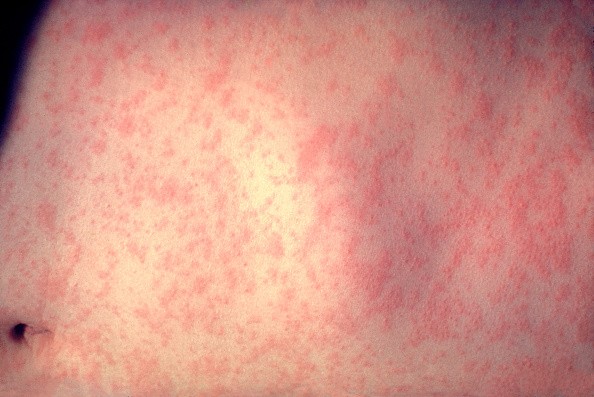
Measles is not just a rash that will go away in a few days. As the outbreak of measles in the United States continues, health experts are warning that measles can damage eyesight and in some cases cause blindness.
In many people the first sign of a measles infection will show up in the eyes. Almost all people who come down with measles will have conjunctivitis-bloodshot eyes and inflammation and redness of the inside of the eyelids-as the first symptom. In some cases, the corneas of the eyes, the clear surface at the front of the eyeball, can progress from being inflamed to becoming ulcerated and possibly scarred. This type of damage from measles can impair or ruin eyesight. However, a measles infection can also damage cells in the optic nerve or the retina of the eye.
Other severe complications of measles include dehydration from diarrhea, pneumonia, and brain inflammation and swelling. Brain inflammation and swelling are another way that measles can affect eyesight.
Measles can also impair the eyesight of babies born to mothers who contracted the infection during pregnancy.
Worldwide, about 60,000 cases of blindness each year are due to measles infections.
Complications are usually more common in adults who come down with measles, but about one to two children who come down with the measles die from it, according to the U.S. Centers for Disease Control and Prevention.
As of Feb. 13, 141 people in 17 states and the District of Columbia have been confirmed to have the measles. Most of these people had not been immunized against the virus. The majority are people who were infected as part of the ongoing outbreak associated with Disneyland in Anaheim, CA.
Measles is an extremely contagious viral infection. About 90% of people who have not been vaccinated or who are not immune will come down with measles if they are exposed to the virus. It is transmitted though coughing or sneezing.



